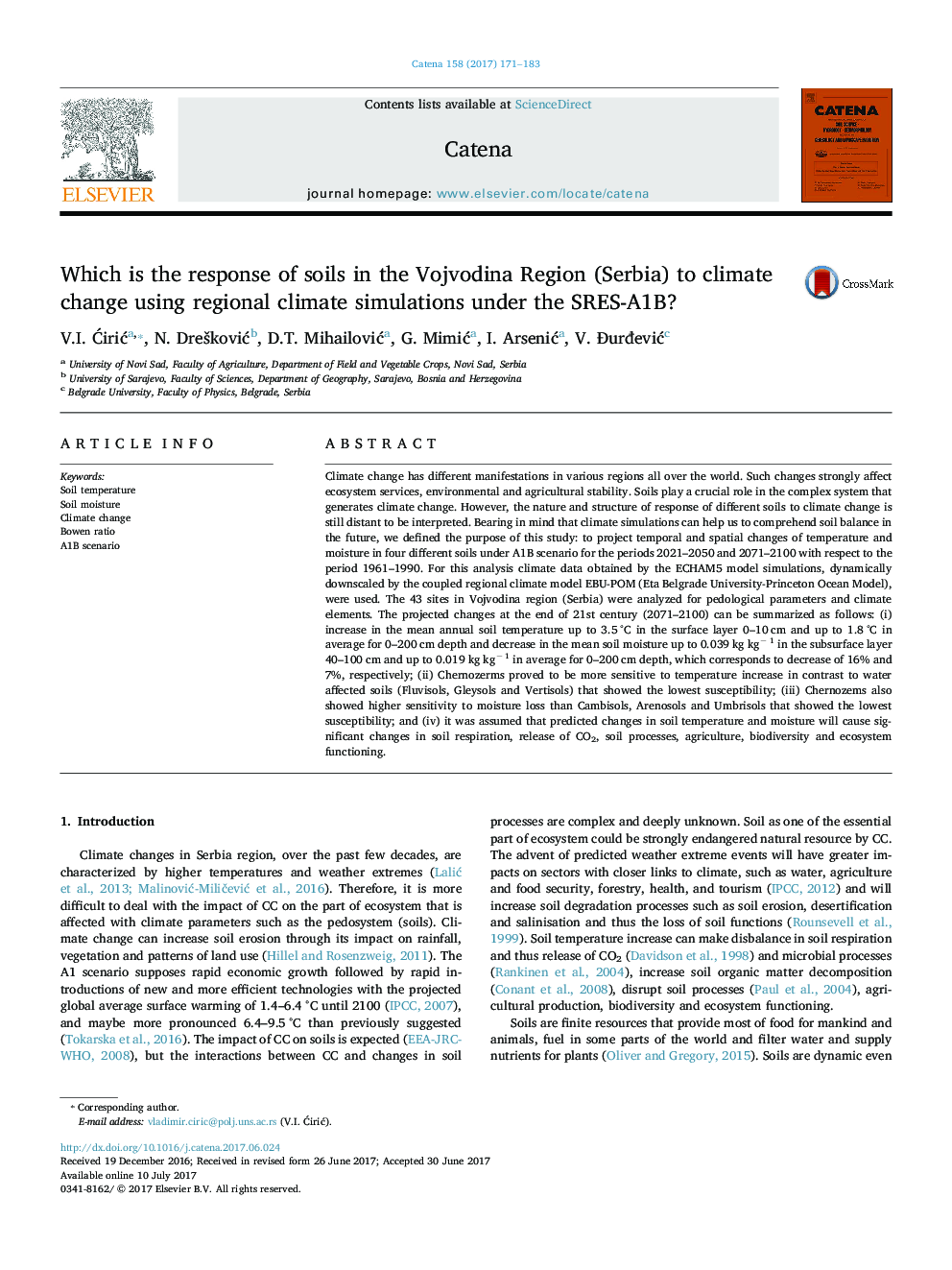| کد مقاله | کد نشریه | سال انتشار | مقاله انگلیسی | نسخه تمام متن |
|---|---|---|---|---|
| 5769902 | 1629196 | 2017 | 13 صفحه PDF | دانلود رایگان |

- Increase of mean soil temperature up to 3.5 °C (0-10 cm) and 1.8 °C (0-200 cm) till 2100
- Decrease in the mean soil moisture of 16% (40-100Â cm) and 7% (0-200Â cm) till 2100
- Chernozems proved to be more sensitive to CC unlike Fluvisols, Gleysols and Vertisols
- Soil layer 40-100Â cm will be exposed with higher water loss than the other layers in 0-200Â cm.
Climate change has different manifestations in various regions all over the world. Such changes strongly affect ecosystem services, environmental and agricultural stability. Soils play a crucial role in the complex system that generates climate change. However, the nature and structure of response of different soils to climate change is still distant to be interpreted. Bearing in mind that climate simulations can help us to comprehend soil balance in the future, we defined the purpose of this study: to project temporal and spatial changes of temperature and moisture in four different soils under A1B scenario for the periods 2021-2050 and 2071-2100 with respect to the period 1961-1990. For this analysis climate data obtained by the ECHAM5 model simulations, dynamically downscaled by the coupled regional climate model EBU-POM (Eta Belgrade University-Princeton Ocean Model), were used. The 43 sites in Vojvodina region (Serbia) were analyzed for pedological parameters and climate elements. The projected changes at the end of 21st century (2071-2100) can be summarized as follows: (i) increase in the mean annual soil temperature up to 3.5 °C in the surface layer 0-10 cm and up to 1.8 °C in average for 0-200 cm depth and decrease in the mean soil moisture up to 0.039 kg kgâ 1 in the subsurface layer 40-100 cm and up to 0.019 kg kgâ 1 in average for 0-200 cm depth, which corresponds to decrease of 16% and 7%, respectively; (ii) Chernozerms proved to be more sensitive to temperature increase in contrast to water affected soils (Fluvisols, Gleysols and Vertisols) that showed the lowest susceptibility; (iii) Chernozems also showed higher sensitivity to moisture loss than Cambisols, Arenosols and Umbrisols that showed the lowest susceptibility; and (iv) it was assumed that predicted changes in soil temperature and moisture will cause significant changes in soil respiration, release of CO2, soil processes, agriculture, biodiversity and ecosystem functioning.
Journal: CATENA - Volume 158, November 2017, Pages 171-183